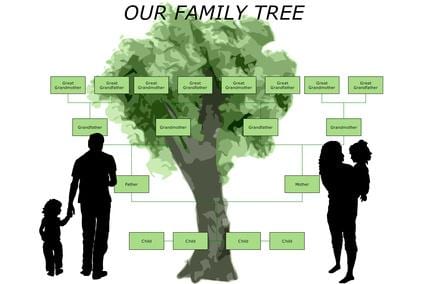As your children reach grade school, sooner or later they are going to come home with an assignment to write about their family tree. Instead of cringing and looking for the nearest closet to hide in, use this homework assignment as an opportunity to introduce them to the generations that are their heritage. By tracing your family history and learning the stories of your ancestry, you can make this an enjoyable project for both your children and yourself, and–in the process–keep alive the memory of those who came before you.
Step 1
Interview older family members, such as your parents and grandparents. Collect the dates of important life events, such as birth place and date. Get their parents’ full names, place and date of birth, as well as dates and places of their baptism, marriage, military service and other life events.
Step 2
Invite them to expand on their information. Ask specific questions about where they went to school, what their neighborhood was like, what their first job was and what they remember about their childhood. They may also remember information about their own parents and grandparents. Make sure you don’t limit the conversation to the specific questions you have in mind.
Step 3
Ask if they know of other family members who might have information to add about your great-grandparents and other ancestors. Often, you will find there’s an unofficial family historian, just waiting for a niece or cousin to express an interest in this hobby. Besides noting their stories, remember to ask for copies of any photos and documents, such as birth, marriage and death certificates, so you can illustrate your family history. This will also enable you to check dates for inaccuracies.
Step 4
Visit your local library, and access the genealogy resources available. Most libraries will have copies of census information as well as subscriptions to genealogy websites. Look up your ancestors by name and place. Document their ages, family members and occupations, as well as their immigration history or service in the military. Census records are available from 1790 to 1930. The 1940 data will be released in 2012.
Step 5
Write a life summary of each person in your family tree. Start with your parents and grandparents. Go back as many generations as possible. Remember to include short stories about their lives, as this will make your research a family history rather than a family tree that only includes dates and places. Consider giving a copy as a gift to each person you interviewed when compiling your family history.
Photo Credit
- family tree image by Judy Ben Joud from Fotolia.com





